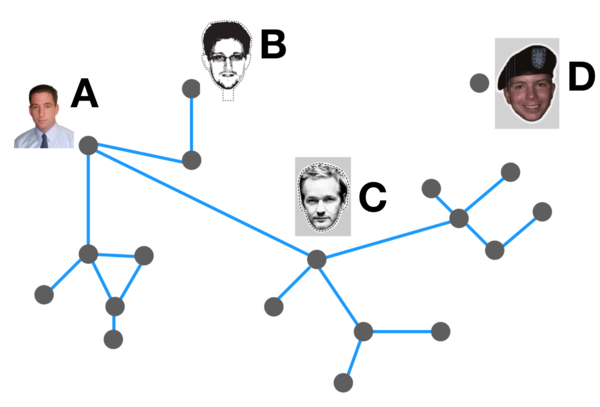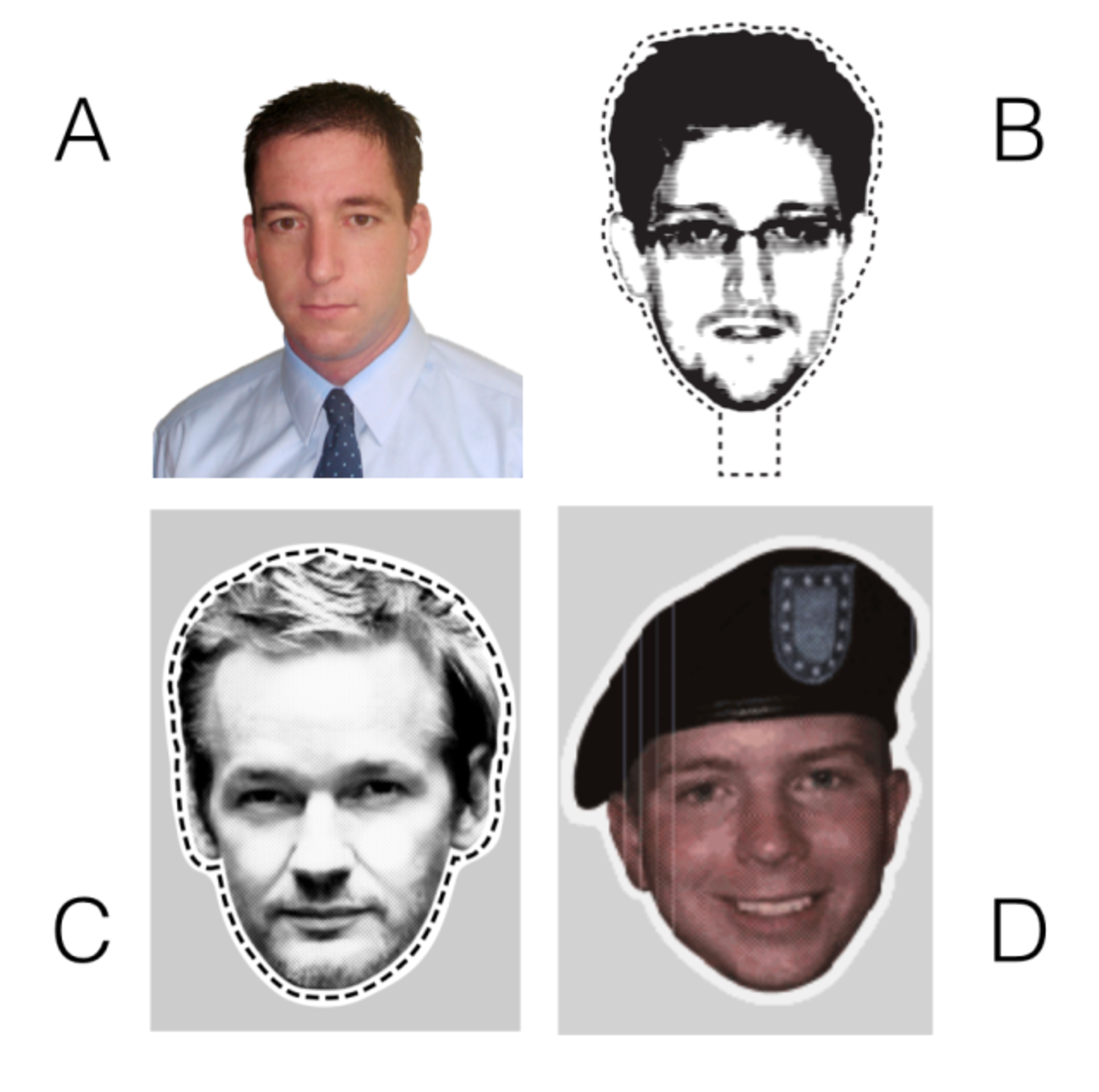The internet as a surveillance network

Government surveillance agencies have a tendency to accumulate strange new powers during times of panic. The US National Security Agency (NSA) now has the ability to monitor the communications of suspected individuals as well as the communications of people within some number of hops of any suspect. In the communication network above, which person is connected to the greatest number of people through 1 hop or less?

Details and Assumptions:
- Each dot represents a person.
- Each line represents communication between the people on either end.
- If X communicates with Y, and Y communicates with Z, we say that X and Z have a 1-hop connection, and that X has a 0-hop connection with Y.
This section requires Javascript.
You are seeing this because something didn't load right. We suggest you, (a) try
refreshing the page, (b) enabling javascript if it is disabled on your browser and,
finally, (c)
loading the
non-javascript version of this page
. We're sorry about the hassle.
This is equivalent to traversing the depth-2 subtree from each person node. Here is some pseudocode for solving this problem in a computational way: